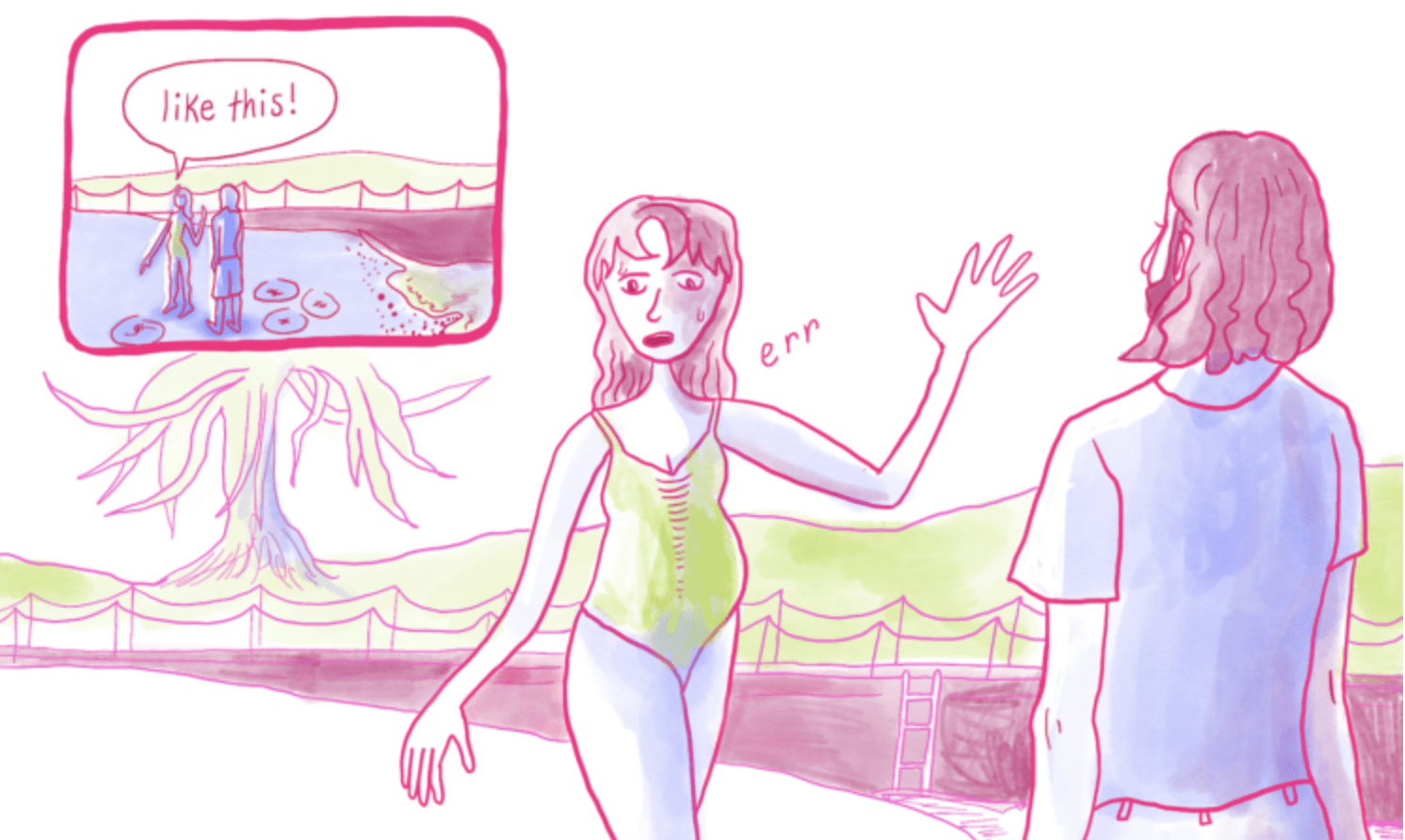OPENPORT
If you’re familiar with the literature and criticism dealing with contemporary art, you’re probably aware that the concept of divisions between various media is increasingly come to be seen as obsolete. Particularly in progressive circles, the mourning period ended a while ago, and artists, curators, and critics alike have instead opted to envision a future without boundaries, where art, language, performance, video, and other media meet to create an artistic hybrid with infinite possibilities.
OPENPORT, an art festival which is the effort of four Chicago-based artists with a variety of conceptual interests and affiliations with the School of the Art Institute of Chicago, attempts to initiate this transition by highlighting artists who work outside the traditional boundaries between media. Rather than dividing participating artists by media, the curators—SAIC Sound Department alumnus, Nathan Butler; Performance faculty member, Mark Jeffery; Art and Technology faculty member, Judd Morrissey; and alumnus and faculty member in the Art and Technology and Sound and Performance departments, Lori Talley—instead sought thematic similarities. “The festival was conceptually framed around the idea of realtime, and the various possible understandings of this term which can be seen as one word, two words, or a hyphenated word,” the curators told F Newsmagazine via email. “We were interested in how time and presence are sculpted in performances that emphasize the live body, and then how the technological interpretation[s]…present a different understanding of time.”
OPENPORT, which began February 2 and continues through February 24, consists of a variety of events; in addition to performances each weekend, several participating artists were invited to present weekly lectures based on their work at the Joan Flasch Artists’ Book Collection at the School of the Art Institute of Chicago. Caroline Bergvall—a London-based artist working with language, performance and poetry, and with a variety of credentials including co-chairing Bard College’s MFA writing program—gave one such presentation on February 8. Drawing on the work of such varied artists and writers as Hans Bellmer, Cindy Sherman, and Hannah Arendt, Bergvall’s discussion of her interdisciplinary work demonstrated the sort of amalgamation of writing, artistic practice, real life, and experience that the OPENPORT curators hope to promote. “I am interested in the point when you stand there with literature and art history and you are allowed in,” Bergvall explained in her lecture. “You take it and use it as a commentary of what has been.” Her recent work, Goan Atom, which has been published in two volumes, is especially demonstrative of this aim. A performance based on the second, most recent volume of the piece, Fig Reduction, was one of several performances that took place during one of a number of performances the weekend of February 9 at Links Hall. OPENPORT’s website describes Bergvall’s reading style as “virtuoso reading technique,” an appropriate assessment given the staccato presentation of the artist’s disjointed syllable-based writing, grounded in notions of “anatomy and dissection,” as she stated in her lecture.
Bergvall’s combination of lecture and, later, performance, demonstrates one of the most intriguing aspects of the series; at times, in the translation from idea to actual exhibition (or, in this case, performance) the ultimate aim of the curator is not fully recognized by his or her audience, or at worst, lost completely. In a series such as OPENPORT, which deals with a vision of artistic practice that remains, at present, somewhat theoretical, the inclusion of artists’ personal commentary and explanation of their own work provides a helpful context with which to interpret the series and envision the sort of artistic future which the curators envision. Bergvall’s lecture, for example, included her intrigue with the idea of the face, a preoccupation which found its way into Fig, the performance she presented as part of the series. “You don’t have a face, per se, until someone sees it,” Bergvall explained in her lecture. “You’re caught in someone else’s gaze.” While Fig, as a performance, was rich and thought provoking, the curators’ logistical decision to supplement the series with personal commentary was especially helpful in interpreting their vision.
“Use of the word ‘performance’ is becoming ubiquitous as a term and concern in contemporary practices of all kinds, but this word has been largely detached from its meaning within a tradition of live art,” OPENPORT’s curators told F Newsmagazine. “At the same time, technology presents new possibilities for performance, new rigors.” In their attempt to redefine and experiment with the way in which performance, as an artistic practice, intersects with language, technology, the human body, and temporality, the creators of the series pose such a wide, intriguing, and potentially unanswerable range of questions that OPENPORT will provide food for thought for writers, curators, and artists of almost any discipline. Ultimately however, the process of investigation posed by such questions may be as valuable as the answers; as the curators stated to F Newsmagazine, “we are interested in creating a convergence of art practices where new possibilities may emerge.” Such intersections are effectively created by the series, articulating a provocative interpretation of the future of both the art world and interdisciplisnary practice.
For additional coverage of OPENPORT, check out Mike Ramsburg’s Docking at OPENPORT: One man’s experience in a loud, strange harbor , another FNewsMagazine.com web exclusive!
A symposium concluding OPENPORT, entitled “Disappearance of Latitude: Live Presence & Realtime in Contemporary Practice” will take place Friday, February 23, from 9 a.m. to 4:30 p.m. in SAIC’s 280 S. Columbus Drive building, room 012. A final installation and exhibition will also conclude the series from February 23 to 24 in SAIC’s BASE Space. For further information and a complete schedule, see www.openportchicago.com.



















